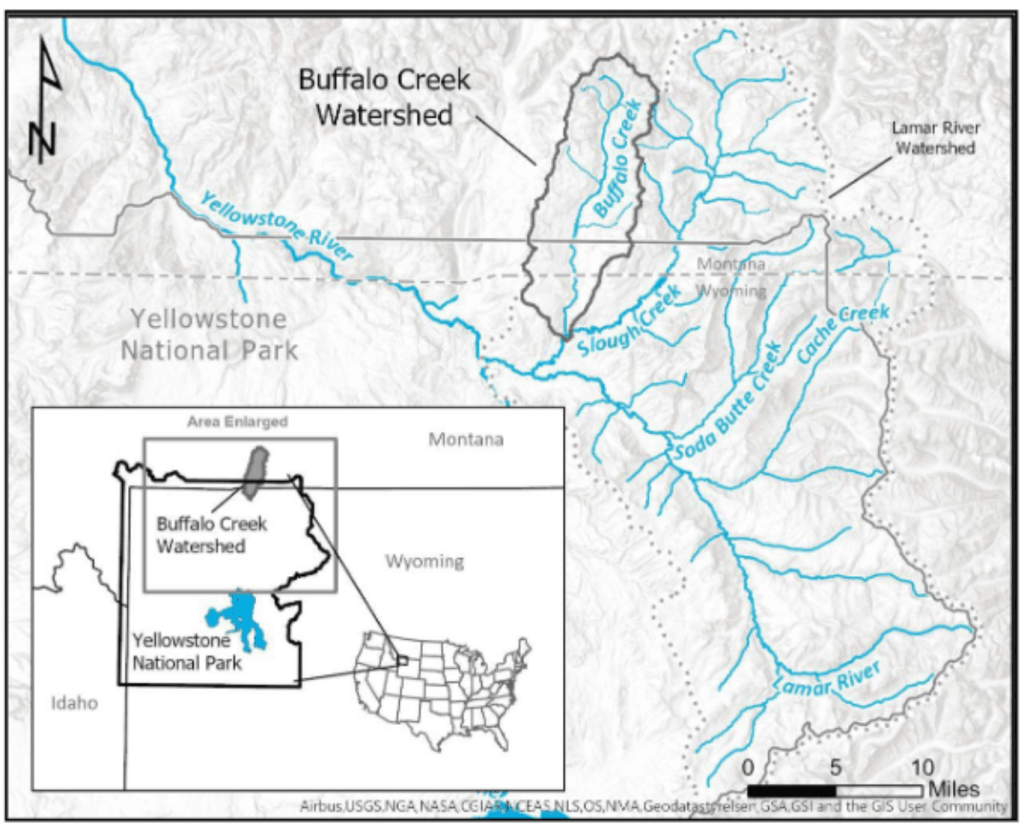A Missoula-based nonprofit that advocates for wilderness conservation is pushing back on a Forest Service plan to poison 46 miles of waterways within the Absaroka-Beartooth Wilderness in an effort to clear them for Yellowstone cutthroat trout.
In a lawsuit filed in the U.S. District Court Nov. 8, Wilderness Watch argues that the Buffalo Creek project violates the Wilderness Act, which holds that wilderness areas should retain “primeval character and influence” and be “protected and managed so as to preserve [their] natural conditions.”
The Buffalo Creek project was authorized by the Custer Gallatin National Forest in August at the behest of Montana Fish, Wildlife and Parks, which seeks to expand Yellowstone cutthroats in waters beyond their native range to create a climate refuge for the fish as the waterways they’ve historically inhabited warm.
RELATED
Where will all the wildlife go?
On June 7, the U.S. Fish and Wildlife Service unveiled a proposal to introduce threatened and endangered species outside of their historic ranges to prevent them from becoming stranded by climate-driven habitat changes. Some conservationists describe the move as a long-overdue game-changer, while others cast a wary eye on what they describe as an attempt to play God.
Hidden Lake and the upper reaches of Buffalo Creek are naturally fishless due to the area’s topography, but state wildlife officials have stocked rainbow trout in Hidden Lake since at least 1932. Now the state hopes to address the hybridization of rainbow trout and Yellowstone cutthroat trout in lower stretches of the watershed by applying rotenone to Upper Buffalo Creek and 36 acres of wetlands and lake surface, to create what Wilderness Watch describes as “an artificial reserve of Yellowstone cutthroat trout.”
Wilderness Watch Executive Director George Nickas described the plan as an attempt to “play God with species and habitat manipulation.” His group also takes issue with the expansion of motorized activity within the Absaroka-Beartooth Wilderness that the Forest Service has authorized for the poisoning and restocking project. Up to 81 aircraft landings and 60 days of motorized use have been approved to execute the plan.

“The Wilderness Act was passed precisely to rein in the propensity of managers to want to control nature. Our lawsuit seeks to preserve the wild character of the Wilderness and to let nature continue to evolve of its own free will,” Nickas wrote. His organization is asking courts to block the project, which is slated to begin next year.
In an April 2022 press release announcing the Forest Service’s support for the Buffalo Creek project, Gardiner District Ranger Mike Thom wrote that the agency was “poised to create secure cold water refugia and strongholds for the long-term sustainability and success of Yellowstone cutthroat trout.”
“This is one of those prime opportunities working jointly with Montana Fish, Wildlife and Parks to benefit the natural characteristics of wilderness with native fish communities critical to our ecosystem,” he continued.
LATEST STORIES
Why Gianforte’s reelection bid has drawn a challenge from the right
Greg Gianforte is stumping as a pragmatic conservative in an election year dominated by culture war issues. That’s helped earn him a challenge from the GOP’s right flank.
Addiction treatment homes say funding fixes don’t go far enough
Montana health officials have started a voucher system to help people with substance use disorders move into transitional housing as they rebuild their lives. But those who run the clinical houses said the new money isn’t enough to fix a financial hole after a prior state revamp.
June primary ballots give voters a chance to re-think their local government structures
This year’s June primary ballots include a little-understood, once-a-decade question that gives voters the ability to launch a multi-year review of their local government structures. Local advocates are pushing for “yes” votes this year in Bozeman and Billings.


